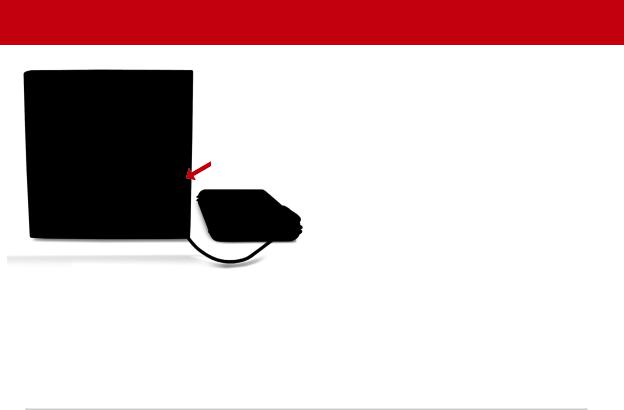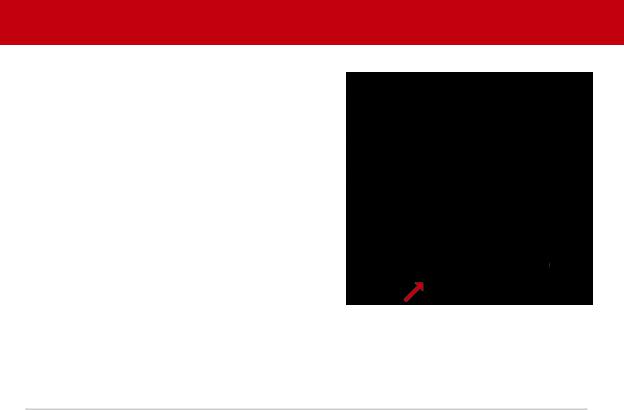Buffalo LS-QL Manual

User Manual
LS-QL/R5
LinkStation Quad
www.buffalotech.com |
v2.2 |
|

Introduction
Congratulations on your new LinkStation Quad. This user manual is intended to assist you in configuring it.
Because we’re constantly updating our products, the images and text in this manual may vary slightly from the images and text displayed by your LinkStation. These changes
are minor and should not affect the ease of setup adversely. As time passes, future user interfaces, updated software, and later versions of this manual may be freely available for download at our web site www.buffalotech.com.
For best results, attach the LinkStation Quad to an uninterruptable power supply (UPS).
Back up all your stored files regularly. See pages 63 - 66 for instructions on how to use the LinkStation Quad’s built-in backup utility.
If you run into difficulties or need additional help, feel free to contact our technical support. Contact information for Buffalo Technology and our technical support is available on pages 93 and 94.
2

|
Table of Contents |
Layout............................................................................................................. |
4 |
Installation...................................................................................................... |
7 |
Using your LinkStation with a PC .................................................................. |
11 |
Using your LinkStation with a Mac®.............................................................. |
15 |
Add USB Devices .......................................................................................... |
19 |
Function Button............................................................................................ |
20 |
Web Admin Tool ............................................................................................ |
22 |
Language Settings ......................................................................................... |
26 |
Network Settings............................................................................................ |
27 |
Disk Management.......................................................................................... |
29 |
Shared Folders............................................................................................... |
40 |
Groups ......................................................................................................... |
44 |
Users............................................................................................................. |
45 |
Passwords...................................................................................................... |
46 |
WebAccess..................................................................................................... |
47 |
Remote Access with FTP................................................................................. |
52 |
Media Server.................................................................................................. |
54 |
Direct Copy.................................................................................................... |
55 |
Installing a Printer......................................................................................... |
56 |
Troubleshooting Multiple Shares..................................................................... |
61 |
Backups ........................................................................................................ |
63 |
Time Machine................................................................................................ |
67 |
BitTorrent Client............................................................................................ |
72 |
Maintenance & Notification............................................................................ |
74 |
UPS .............................................................................................................. |
75 |
System Status ............................................................................................... |
79 |
Client Utility.................................................................................................. |
83 |
Troubleshooting............................................................................................. |
85 |
Replacing a Hard Drive ................................................................................. |
86 |
Specifications................................................................................................. |
92 |
Contact Information (USA)............................................................................. |
93 |
Contact Information (Europe) ........................................................................ |
94 |
GPL Information ........................................................................................... |
95 |
3

Front Panel Layout
 Power Switch
Power Switch
 Power/Status LED
Power/Status LED
 Disk LEDs
Disk LEDs
Green-Accessing Red-Not mounted
 Function Button
Function Button
 Function LED
Function LED
 USB
USB
4

Front Panel (Open)
 Power Switch
Power Switch
 Power/Status LED
Power/Status LED
 Disk LEDs
Disk LEDs
Green-Access
Red-Error
 Function Switch
Function Switch
 Function LED
Function LED
 USB
USB
5

Power Mode - Auto 
Manual
USB 
Ethernet LED 
Ethernet Port (RJ45) 
Power Adaptor 
Rear Panel Layout
Security
Mounting Point
Power Cable
Guide
6

Installation
Insert the LinkNavigator CD into your computer’s CD-ROM drive.
On a PC, setup should automatically launch. If it does not, manually launch setup.exe by clicking Start and selecting the Run... option. When the Run dialog opens, type d:\lang.exe (where d is the drive letter of your CD-ROM drive). Click OK to continue.
If you are installing the software on a Mac, open the CD and click
LinkNavigator to begin installation.
7

LinkNavigator Setup
Choose your preferred language. Mac users can skip this step.
Click the Begin Installation button. Click Next to step through the installation.
8

LinkNavigator Setup
The wizard will guide you through installation. Follow the directions on each screen and continue clicking Next to step through the installation.
When installation is complete, you may close the installation window.
9

Power Mode
Auto 
Manual
The “Power Mode” switch on the back of the unit has two positions: “Auto” and “Manual”. The “Auto” position automatically powers the unit on or off with your PC. If your PC is turned on the LinkStation will power up; if the PC is turned off the LinkStation will power down.
You must have installed the NASNavigator2 software on your PC for this feature to work. Otherwise, if you move the switch to “Auto”, your unit will power down by itself and you will have to manually turn it back on.
Also note that the unit needs to be powered on if you want to use the Web Access feature. When using Web Access, it is best to leave the Power Mode switch set to “Manual”.
To turn the LinkStation off, hold down the power button on the front panel for five seconds. It will take about 30 seconds to shut down. Do not unplug or interrupt power to the unit until shutdown is complete and all LEDs are off.
10

Using your LinkStation with a Windows PC
Three new icons will be on your desktop: Buffalo NAS Navigator, LS-QLxxx Setup results.txt, and LS-QLxxx, where xxx is the last three characters of the unit’s MAC address. The LS-QLxxx Setup results.txt file contains the IP address and network info for the LinkStation.
Clicking LS-QLxxx takes you directly to the folders on your LinkStation. Share is the main folder that you can put files and folders in. Info contains a copy of your user manual.
The Buffalo NAS Navigator icon opens the LinkStation’s client utility.
Turn to page 83 for more on using the NASNavigator2 client utility.
11

Accessing LinkStation Data from your PC
Your LinkStation uses folders to hold data. The default folder is called “share”. This folder is where you place data that you want to share with other users. You can create additional folders using the Shared Folders option. To start using your LinkStation, you can either click on the LS-QLxxx shortcut on your desktop, or open My Computer, where setup has mapped the next available drive letter to the default share in your LinkStation.
12

Accessing LinkStation Data from your PC
You can map additional drive letters to shares on your LinkStation. From the Start menu, select Run.... Enter your LinkStation’s hostname (if you don’t know it, you can get it from the NASNavigator2 utility) or IP address. Click OK.
Your LinkStation will open. “Share” is a data folder in your LinkStation by default. “Info” contains your user manuals. If you have created other folders, they will be visible here too. You can map drive letters to any of these folders.
13

Accessing LinkStation Data from your PC
From the Tools pull-down menu, select Map Network Drive. Choose a drive letter from the Drive: pull down menu. To specify the folder to map, either find it with Browse or enter \\LinkStation_ Name\share_name in the Folder: field, where LinkStation_Name is your LinkStation’s hostname
(page 21) and share_name is the name of a folder on your LinkStation. Check the Reconnect at logon checkbox to have Windows connect to this mapped drive everytime it starts. When finished, click the Finish button. Your share is now mapped to a drive letter.
14

Using your LinkStation with a Mac
After installing the LinkNavigator software, your Mac will have two new icons.
On the desktop, the LS-QLSettings.txt file contains the IP address of your LinkStation. In the Finder, NASNavigator is the LinkStation’s client utility.
With the information in the LS-QLSettings.txt file, you can easily connect to the LinkStation from any of your computers on your local network.
The NASNavigator icon opens the LinkStation’s client utility. See page 83 for more on using the NASNavigator2 client utility.
15

Accessing LinkStation Data from a Mac
You can add a link to your LinkStation’s share folder to your desktop by adding it to the Mac’s server list. Begin by clicking Go, and then choose Connect to Server.
In the Server Address field, enter your
LinkStation’s IP address in the form smb:// ipaddress (where “ipaddress” is your LinkStation’s IP address), and click Connect.
You can get your LinkStation’s IP address from the LS-QLSettings.txt file on your desktop, or see page 18.
16

Accessing LinkStation Data from a Mac
Select Guest and click on Connect. Note: If you have configured share permissions on your LinkStation, select Registered User and enter your login credentials.
Select the volume that you want to mount, such as share, from the list of folders on the LinkStation.
The share will open. A link to it |
will appear on your desktop. |
17

Accessing LinkStation Data from a Mac
If you don’t know your LinkStation’s IP address, there are several ways to get it.
One simple method is to use the NASNavigator2 client utility (included on your CD) to find your LinkStation(s). Just click on the icon for your LinkStation and you’ll be able to read its IP address.
The LS-QLSettings.txt file on your desktop contains the IP address of the LinkStation at the time that the setup program was run.
You can always get the LinkStation’s IP address from your router’s configuration utility. Many Buffalo routers list this information on the Client Monitor page, as shown to the right. Consult your router’s documentation for instructions on identifying the LinkStation’s IP address.
18

Adding USB Devices
LinkStation Quad has USB 2.0 ports on the front and rear. These ports can be used for adding external USB Hard Drives, a USB Printer, or for connecting to a UPS. LinkStation will share connected USB devices, allowing everyone on the network to use them. To connect a USB hard drive to your LinkStation, simply plug it into the USB port.
Once your USB hard drive is connected, turn to the “Disk Management” section of this manual for information on configuring your LinkStation to use it.
To configure a USB printer, see “Installing a Printer”. To configure UPS settings, see page 75.
1 or 2 USB devices may be used with the LinkStation at a time. USB hubs are not supported.
19

Using the Function Button
Direct Copy - You can copy digital media files directly to the
LinkStation Quad from a USB storage device, such as a digital camera, USB flash drive, or external hard disk.
1.Connect your USB device to one of the USB ports on the
LinkStation. The function LED will glow solid blue for 60 seconds.
2.While the function LED is still glowing blue, press the function
button once.
The following folder is created automatically:
DirectCopy/pictures/yyyymmdd
where yyyy is the year, mm is the month, and dd is the day.
The following types of files will be copied to the folder: avi, divx, asf, mpg, mpe, m1v, vob, mts, m2ts, m2t, mpeg, mpeg2, vdr, spts, tp, ts, 3gp, mov, m4v, wmv, dvr-ms, xvid, mp4, m4v, jpg, jpeg, gif, png, tif, tiff, yuv, bmp, mp3, mpa, wma, aac, apl, ac3, lpcm, pcm, wav, m3u, m4a, mp4, m4b, aif, aiff, flac, ogg, mp2, mp1, mp4.
20

Using the Function Button
 Power Switch
Power Switch
 Power LED
Power LED
 Function Button
Function Button
 Function LED
Function LED
Initialization - You can easily bring your LinkStation Quad back to factory settings with the following steps.
1.Hold down the power button for
8seconds. The LinkStation will shut down after about 30 seconds.
2.While holding down the function button, press the power button. The LinkStation will power on and the function LED will begin to flash blue.
3.While the function LED is still flashing, hold the function button down for six seconds.
Dismount - Before disconnecting USB devices from the LinkStation Quad, they should be dismounted. Hold the function button down until the function LED glows blue, and then turns off. It’s now safe to unplug your USB devices.
Note: Unplugging USB devices without dismounting them first may corrupt your data!
21

Web Administration Tool
The web admin tool may be accessed at any time by typing the IP address of your LinkStation into the URL bar of a browser running on a computer connected to the same network as the LinkStation.
You may also open the Web Admin from
NASNavigator2 by right-clicking on your
LinkStation and choosing Open Web Admin from the menu.
22

Login
This login prompt will appear. Enter admin for the user name. Until you change it, the password for the admin account will be password. Click the Login button when finished.
User name: admin Password: password
Instructions for changing your password may be found on page 46.
23

Advanced Settings - Home
Welcome to your LinkStation’s Web Admin tool! You are now at the Home screen. Notice that the
Home button is lit up in yellow. You can navigate this menu by clicking on the buttons at the left of the screen. Here at “Home”, you can see basic information about your LinkStation’s current configuration. To exit Web Admin, click on logout or close the browser window.
24

Basic Settings
You may modify your LinkStation’s hostname and description under Hostname Setup. A friendly, easy-to-remember name (e.g. “LinkStation”) is recommended.
Make sure that the date and time are correct in Date and Time Setup. To synchronize time settings with those in your computer, click Use Local Time.
For best results, you can have your system time automatically set by an NTP server. Enable NTP Server and enter an IP Address for an NTP server
(e.g. 192.43.244.18) or click on the box below to use the supplied default NTP server.
Ensure that both the Display Language and the
Windows Client Language are set to languages that you’re comfortable with.
Once desired fields have been completed, click the
Apply button.
25

Language Settings
To change your LinkStation’s language settings to English from an unfamiliar language, click on the second left-side button.
At the bottom of the page, change the last two settings. Select English in the next to last dropbox and CD437 in the last dropbox. Then, click the grey button just below the dropboxes.
Your LinkStation will revert to English the next time you open or change a window.
26

IP Address
In most networks, LinkStation will get its IP Address automatically from a DHCP server. You may disable DHCP here if you would rather set a static IP address manually. If DHCP is disabled and an IP Address is not set manually, it will default to 169.254.xxx.xxx with subnet mask 255.255.0.0. The LinkStation’s IP Address, Subnet Mask, Default Gateway Address, and DNS Server address may all be entered manually under IP Address Properties.
Ethernet Frame Size may also be set manually on this page. Only use JumboFrame settings when operating in a Gigabit environment where all other clients support the same JumboFrame setting.
Click Apply after making any changes.
27

Network (Workgroup)
To make your LinkStation a member of a workgroup, enter the appropriate information into the fields on this page and click Apply.
28

Disk Management
This page shows the properties for the drives in your LinkStation Quad. If you have USB hard drives plugged into the LinkStation, their properties will appear here as well.
29
